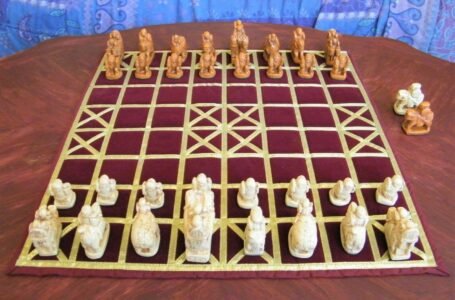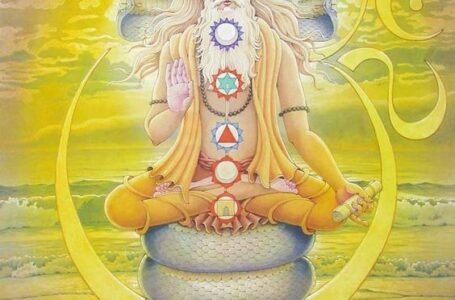Yoga : Medicine of Mine Body and Soul
- Lifestyle
 Shiwani Kumar
Shiwani Kumar- June 21, 2022
- 0
- 335

The Sanskrit word “Yuj”, which means ‘to connect’ or ‘to combine,’ was used to coin the term yoga. This connection is more than just your nose brushing against your knees as you stoop to touch your toes! The unity in question is between your mind and your body. You’re blending in with your surroundings and the natural world. Finally, the union of your consciousness with the general mind.
Yoga is an ancient form of exercise that evolved in Indian society over thousands of years and has been practised ever since. It involves a variety of exercises designed to keep a person in shape and help them overcome various illnesses and disabilities. It’s also regarded as a reliable meditation technique for calming the mind and body. Yoga is a form of exercise that is practised all over the world. Yoga is practised by over 2.2 billion people worldwide. Yoga is an ancient practice of physical, mental, and spiritual well-being that originated in India and is now practised in various ways around the world, according to a survey. Yoga is an ancient practice of physical, mental, and spiritual well-being that originated in India and is now practised in various ways around the world.

Yoga Science is one of India’s many distinctive contributions to the world. Through yogic practises, it strives to uncover and realise the ultimate Reality. You may have noticed that all the gurus, teachers, and trainers quote from the ‘Yoga Sutra,’ which is the guidebook of traditional, or raja (royal), yoga, and refer to it as the authentic book on Yoga. Patanjali wrote the Yoga Sutra at least 1,700 years ago, and it contains 195 aphorisms (sutras), or wise words. He lived in the second century BCE, according to some, and published important works on Ayurveda (the ancient Indian system of medicine) and Sanskrit grammar, making him a Renaissance man. Modern researchers, however, date Patanjali to the second or third century CE, based on their assessments of the language and teaching of the sutras, and attribute the medical essays and grammar to several other “Patanjalis.” He was an expert in Sanskrit, mathematics, and astronomy. He is widely regarded as the founder of modern yoga. He did not, contrary to popular belief, invent yoga. Yoga existed in many forms before his arrival, which he incorporated into a system.
For decades, Hindus have understood the significance of yoga, and for many years, the entire world has been talking about, practising, and accepting yoga and its advantages. Over time, people realised the value and power of yoga. Human beings are made up of three elements: body, mind, and soul, which all work together to fulfil three basic needs: health, knowledge, and inner peace. When all three are available, there are improvements. Health is a physical need, understanding is a psychological need, and peace is a spiritual need.

On a physical level, yoga provides treatment for a variety of ailments. Asanas (exercise positions) strengthen the body and provide a sense of well-being. Yoga boosts the intellect and aids attention, soothes emotions, and encourages compassion for others from a psychological standpoint. The mind is calmed through practising breathing techniques (Pranayama). It brings consciousness and the ability to settle down in the sphere of spiritual yoga.
Meditation allows us to experience inner tranquilly. As a result, yoga is a practical philosophy that encompasses every area of human life. It teaches the development of self-discipline and self-improvement as a means of personal evolution. Yoga can be practised by anybody, regardless of age, income, or religion. Yoga aids in the discipline of our sense of strength. It enhances fitness, stress management, and well-being, as well as mental clarity and self-awareness. Yoga may be practised and understood by people of all ages. By combining body control, weight loss, blood pressure regulation, and improved cardiovascular performance, these asanas improve muscle strength, coordination, and flexibility while also helping to regulate our cholesterol levels. Also, by calming the mind, you can lessen stress in your life. The human body is designed to cure itself. It can be used not only to shape different levels but also as a self-healing tool. Most people find it challenging to spend time on their health and fitness in today’s environment of hectic lives and increased travel.
Unlike the first half of the century, when infectious disease was the leading cause of death, today’s health issues are primarily caused by lifestyle choices. An unhealthy lifestyle and behavior are linked to the cardiovascular system, heart disease, strokes, atherosclerosis, chronic lung illnesses, diabetes, liver cirrhosis, suicide, and many types of cancer.
A doctor will appear in everyone’s life at some point. Yoga is also used for self-diagnosis, treatment, prevention, and upkeep. For thousands of years, millions of individuals have practised safe and effective yoga without ever seeing a doctor. A person can track his progress while doing yoga, and he will undoubtedly understand how valuable yoga is. Yoga postures and activities can be presented with ease and with little effort when it comes to self-diagnosis. We should not be discouraged if we are prepared. With a little care and patience, we can practise yoga. It activates our bodies’ natural adaptability and rejuvenation mechanisms. We lose it if we don’t utilise it, but we can regain it if we start using it again. Some even claim that yoga has given them more energy than they’ve ever had before. Even those who begin later in life reap the advantages of their efforts. Yoga can be a substantial improvement in regular training routines for athletes. Yoga can help you improve your strength, flexibility, range of motion, and attention while also reducing stress and tension.

The impact on performance is the most essential benefit of including yoga in your training programme. Because the action is more substantial and the risk of injury is reduced, the athlete can train more and more. Some people believe in this deity, while others find it highly addictive and useful in replacing bad thinking. It’s reassuring to know that if we practised yoga every day, 75 per cent to 85 per cent of us would be free of chronic back, neck, and head discomfort. It takes time for our bodies to respond to it. Drink plenty of water and consume nutritious meals, as well as moderate exercise and yoga daily.
Yoga can make life as efficient and pleasurable as possible. To begin, it is critical to understand the yoga technique, including how to stretch, relax, and breathe. We’ll then be prepared for safe training. Yoga does not take away our honesty, health, or compassion; rather, it instils them in us. When we first begin practising simple asanas, we quickly learn what to look for and what it requires. The impacts are instantaneous, and the outcomes grow more obvious over time. The more time and effort we put into the pure and forgiving discipline of yoga, the better. The more therapeutic this is for us, the better. Yoga is as enthralling as the power of life itself. Release buried energy and unlock the mystery of life. Anyone can experience Divinity and enjoy freedom from suffering, ignorance, and other amusing benefits like longevity and happiness thanks to this skill. It took a long time for them to respond to us. Untangling takes time, of course. It is never too early or too late to begin practising yoga if we are still breathing. Yoga is a healthy practice that is simple to follow and can help with a variety of serious health issues that are frequent in today’s society. Overall, Yoga has been a driving factor in bringing an increase in the health of people who practice it. We, therefore should realize its importance in day-to-day life and include it in our daily schedule so that we can harness the positivity and benefits yoga brings along. It will finally be for ourselves that practice yoga daily, so being selfish to practice yoga is a pretty good idea to execute.

